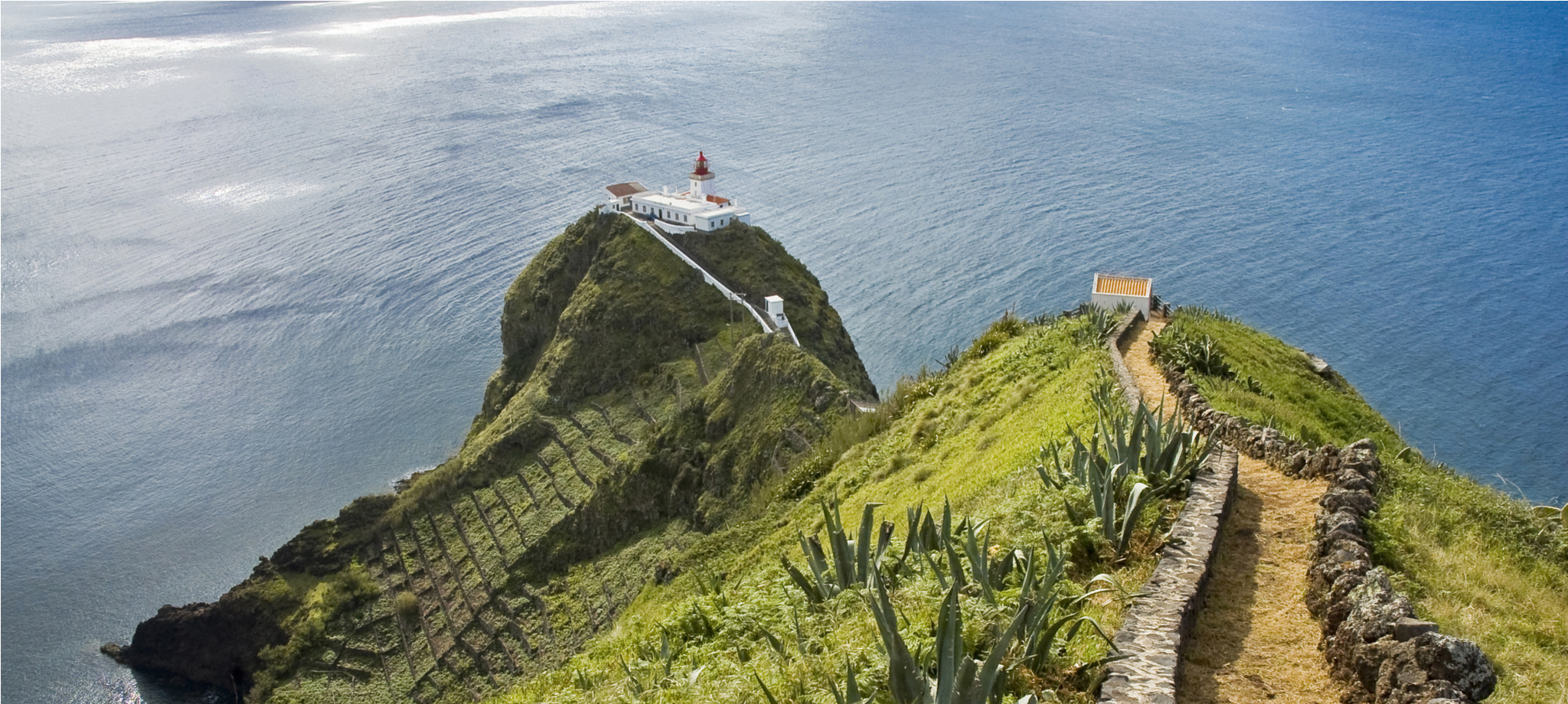Island of Corvo: a symbol of resilience and faith
Corvo Island’s history is marked by isolation, resilience, enduring connection to faith and an enigmatic statue. Despite its small population and remote location, Corvo faced significant challenges, including threats from North Atlantic piracy.
The enigmatic equestrian statue of Corvo
The mystery of the equestrian statue on Corvo Island remains one of the greatest enigmas of the Azores, challenging the conventional narrative about the archipelago’s discovery by the Portuguese.
According to historical accounts, when Portuguese sailors reached the remote island of Corvo, they encountered at the northwest summit an impressive stone statue of a man mounted on a horse, with his right arm extended, pointing towards the horizon. Cloaked in a mantle, with his head uncovered and facing maritime erosion, the monument displayed worn inscriptions that read “Jesus, forward,” suggesting a possible direction towards the Americas, which had not yet been discovered by Europeans at the time.
The statue, which some speculate to have Carthaginian or Phoenician origins, could indicate that ancient civilizations knew of the Azores before the Portuguese.
Despite efforts by King Manuel I to transport the statue to Portugal, it disintegrated during removal, leaving only fragments and many unanswered questions. To this day, the site where the statue was found, known as “Marco Island,” continues to be a point of historical and archaeological fascination, reflecting the depth of the untold history of the archipelago.
A vulnerable settlement
In its early days, Corvo’s settlement was concentrated along the coast near a loose beach called Porto da Casa. This area was easily accessible, making the island vulnerable to pirate attacks. The steep cliffs surrounding the island offered some natural protection, but they were not enough to deter determined invaders.
The battle against pirates
One of the most notable events in Corvo’s history occurred during a pirate raid. According to historical accounts, while the men were tending to their flocks in the hills and the women remained in their homes, a large group of pirates descended upon the settlement. The pirates fired upon the village, only to be met with resistance from the locals who hurled rocks from the cliff-tops.
During the battle, the local vicar carried a small statue of Nossa Senhora do Rosário (Our Lady of the Rosary) into the fray. This statue had long been venerated by the community and had recently been placed on the altar of the small chapel on the cliff. The battle was intense, but the Corvinos managed to defeat the pirates, capturing weapons and even a Moor, without suffering any loss of life. The victory was attributed to the miraculous intervention of the statue, believed to have deflected the pirates’ bullets back at them.
Nossa Senhora dos Milagres (Our Lady of the Miracles)
Following the miraculous victory, the statue of Nossa Senhora do Rosário became known as Nossa Senhora dos Milagres (Our Lady of the Miracles). The story of the battle and the “Margarida” who protected the island spread far and wide. Today, this revered statue is housed in the parochial church in Vila do Corvo, serving as a symbol of the island’s resilience and faith.
Legacy of the battle
This event remains a significant part of Corvo’s cultural and historical identity. It highlights the islanders’ bravery and strong faith, qualities that have allowed them to endure the challenges of living on such a remote and isolated island.
For those looking to explore the Azores, check out our travel packages that highlight the islands’ historic sites and scenic landscapes.
